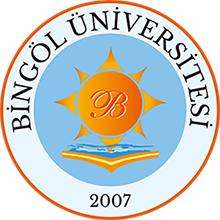Synthesis of New Hydrazide-Based Phenolphthalein and Rhodamine B Derivatives and Investigation of Their Photophysical Properties
Abstract
ABSTRACT:
This thesis focused on the synthesis of novel organic probes based on phenolphthalein (PP) and rhodamine B (RhB), evaluating their interactions with various ions. The study employed techniques like colorimetric analysis, UV-vis/fluorescence spectroscopy, FT-IR, mass, and ¹H-NMR spectroscopy, along with theoretical calculations, to understand the binding mechanisms. Optimization of conditions (solvent, pH and time) revealed specific ion affinities influenced by these variables. For instance, PP-1 interacted with multiple ions at different pH levels, while PP-2 and PP-3 showed selective responses towards specific ions. Rhodamine-based probes also demonstrated selective ion interactions, particularly in mixing water organic solvents and buffer solutions. Quantitative analysis involved calculating the limit of detection (LOD), limit of quantification (LOQ), and binding constants (Ka) for each probe-ion interaction. These results suggest that probes with LOD values ranging from 23 nM to 554 nM for Al³⁺ could be effective for detecting aluminum in wastewater samples. Similarly, it was determined that the LOD values for other ions changed from 1.01 mM to 334 nM for Hg²⁺, from 64 nM to 550 nM for Zn²⁺, and from 15 nM to 551 nM for Cd²⁺. Additionally, the LOD value of PP-3 for Cu²⁺ was calculated as 1.56 mM. The probes exhibited sensitivity within WHO limits for detecting ions in environmental samples. Additionally, reversibility studies indicated the potential for probe reuse and application in real-world scenarios, including water samples and cigarette smoke. In general, the synthesized probes proved effective for detecting environmental pollutants (Al³⁺, Hg²⁺, Cu²⁺, Cd²⁺, Zn²⁺) and the biological agent GSH, showcasing potential for environmental and biological monitoring. ÖZET:
Bu tez çalışmasında, fenolftalein (PP) ve rhodamin B (RhB) bazlı yeni organik problar sentezlendi ve bunların çeşitli iyonlarla etkileşimleri incelenildi. Propların metal iyonları ile etkileşim mekanizmalarını anlamak için kolorimetrik analiz, UV-vis/floresan spektroskopisi, FT-IR, kütle ve ¹H-NMR spektroskopisi gibi tekniklerin yanı sıra teorik hesaplamalar kullanıldı. Çözücü, pH ve zaman gibi faktörler kullanırak probların spesidik iyonlara ilgileri ortaya çıkarılarak optimisazyon koşulları belirlendi. Sonuçlarda PP-1 farklı pH seviyelerinde birden fazla iyonla etkileşime girerken, PP-2 ve PP-3 belirli iyonlara karşı seçici tepkiler gösterdi. Rhodamin bazlı problarda ise özellikle sudaki organik çözücüler ve tampon çözeltilerinin karıştırılmasında seçici iyon etkileşimleri gösterdi. Her bir probun iyonlar için tespit limitinin (LOD), miktar belirleme limitinin (LOQ) ve bağlanma sabitleri (Ka) hesaplanarak kantitaif analiz yapıldı. Sonuçlarda probların Al³⁺ için LOD değerleri 23 nM ile 554 nM arasında değiştiği ve atık su numunelerindeki alüminyumun tespitinde etkili olabileceği belirlendi. Benzer şekilde diğer iyonlar için LOD değerleri Hg²⁺ için 1,01 mM'den 334 nM'ye değiştiği, Zn²⁺ için 64 nM'den 550 nM'ye değiştiği, Cd²⁺ için 15 nM'den 551 nM'ye değişti belirlendi. Ayrıca, PP-3'ün Cu²⁺ için LOD değeri 1,56 mM olarak hesaplanıldı. Problar, çevresel numunelerdeki iyonları tespit etmek için WHO limitleri dahilinde hassasiyet sergiledi. Ek olarak, tersine çevrilebilirlik çalışmaları, su numuneleri ve sigara dumanı da dahil olmak üzere gerçek numuneler üzerinde probun yeniden kullanım ve uygulama potansiyeli incelendi. Elde edilen sonuçlarda probların gerçek numunelerde kullanılabileceği görüldü. Genel olarak, sentezlenen probların çevresel kirleticileri (Al³⁺, Hg²⁺, Cu²⁺, Cd²⁺, Zn²⁺) ve biyolojik ajan GSH'yi tespit etmede etkili olduğu, çevresel ve biyolojik izleme potansiyeline sahip olduğu ortaya çıkarıldı.
Collections
- Kimya [60]

DSpace@BİNGÖL by Bingöl University Institutional Repository is licensed under a Creative Commons Attribution-NonCommercial-NoDerivs 4.0 Unported License..













